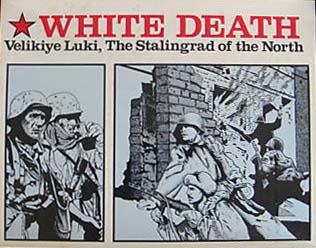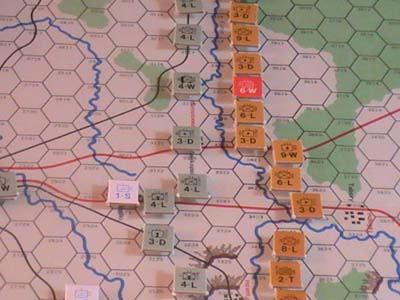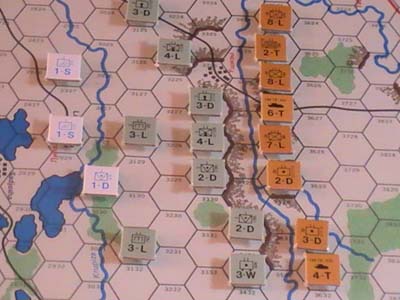SCENARIO
I: Purkayev's Attack (Turns 1-4)
1.
Historical Background and Summary:
Since the German front was only
thinly held, a major rupture of the line was little problem. Purkayev's 3rd Shock
Army did face several problems, however. First among these was a real shortage
of heavy artillery. Although Kalinin Front made available one heavy mortar regiment
and one heavy artillery regiment, most of the front's supporting assets were tied
up in the assault on the Rzhev salient. Once the front stabilized and massive
barrages became necessary to break key points of resistance, it would be necessary
to rely on massing divisional assets, and that could cause problems. Second, all
roads led through Velikye Luki, and it was unlikely that the city could be taken
by immediate direct assault. Until the city was at least partially in Soviet hands
it would be difficult to put even divisional artillery across the Lowatj River.
The resulting tactical situation was fraught with potential peril: Velikiye Luki
had to be taken to threaten the Nevel-Leningrad railroad in strength. Velikiye
Luki, to be taken, had to be isolated and then pounded into submission by heavy
concentrations of artillery. To surround it troops had to be put across the Lowatj,
but to mass the artillery concentration necessary to take the city the troops
would have to leave their divisional guns on the east bank, thus leaving them
vulnerable to a counterstroke.
Purkayev's solution was probably the only
viable option open to him. Infantry and armored elements penetrated the German
lines as quickly as possible and made for the Lowatj and the railroad beyond it.
Surrounded German units were left behind for the follow-up echelons to deal with.
By the end of the first scenario (about twenty days of fighting) the Soviets were
across the Lowatj in strength and, while they had little artillery with them and
had temporarily run out of steam, they had kept the Germans off-balance. Advanced
elements of the 3rd Shock Army had in places been within sight of the vital rail
line and had clearly gained a tactical success. |





